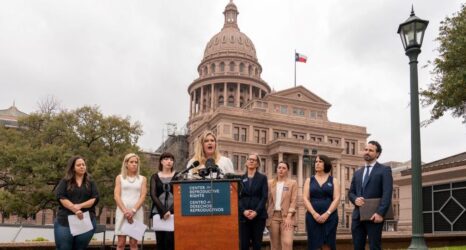The U.S. needs a feminist systems reboot.
Policy-making is never gender-neutral, and policies written without considering gendered impacts from the get-go aren’t just “gender-insensitive,” but often directly harmful to women. We can’t continue to play whack-a-mole with one elected official or one policy at a time. We need to reject the institutionalization of male privilege in all its forms. I believe we can fix inequality—but we must start swinging for the fences.
If equality is the goal, what will be the strategy?
We can accelerate progress by looking to other nations and the gender mainstreaming (GM) framework used by UN Women and nations around the world to address gender-based policy issues since its creation in the 1980’s.
Two U.S. agencies are already implementing this work, but only one of them operates within our borders: In its nascency at the National Weather Service (NWS), gender mainstreaming allows staff to see that hurricanes are not gender or race neutral, and that how they distribute communications in a disaster could make a life-or-death difference for women and girls. The U.S. Agency for International Development (USAID)’s Office of Gender Equality and Women’s Empowerment, meanwhile, brings mainstreaming to the forefront in their implementation of its Gender Equality and Women’s Empowerment Policy.
The interventions the U.S. makes for gender equality abroad, which are compulsory when distributing aid money, are important—but we also need to take a long look in the mirror and get to work solving our own problems at home.
It won’t be perfect the first time, but we need need to start performing gender equity work in every government agency and in every institution. Equality is not achieved overnight, but policy is a constitutional commitment to provide actionable measures and allocate resources. (If this idea sounds intriguing, look to Gender-Sensitive Parliaments, Guidelines for Gender Mainstreaming Academia or Climate Change Gender Action Plans to learn more on GM from experts in other countries.)
There are three things you can do to put wide-scale progress towards gender equality in motion.
#1: Speak up for a systems approach.
The GM framework at NWS was shaped by the efforts led by their global peers at the World Meterological Organization, which prioritizes gender equality. We have a lot to learn from the decades of GM implementation overseas—including the strategies that transformed Iceland into the 1 in the world for gender equality, including the employ of Gender Equality Officers within their government agencies.
One limitation of GM approaches elsewhere, however, is that much of the policy language only refers to gender as a binary (men/women), and are silent towards other gender identities and sexual orientations. Racial relations are also often poorly incorporated in GM frameworks.
GM needs an inclusive redefining, and we can do that within our borders in a way that fits our culture. While the global framework for GM may be missing language related to race and other forms of discrimination, this allows each nation to develop an approach that fits their own culture best. In order for GM to be effective within the U.S., feminists should ensure while pushing for its advancement that the needs of women of color, trans women and other women at the intersections are put first.
Ask your elected officials if they’ve heard of Gender Mainstreaming. Ask them how they review policies for impact by race and gender. Ask whether there are measurable outcomes.
#2: Consider CEDAW.
Nearly all members of the United Nations ratified the 1979 Convention on the Elimination of All Forms of Discrimination Against Women (CEDAW), but the U.S. never did, and our elected officials still refuse to do so. CEDAW lays a roadmap to addressing many hot topics in the U.S.—including reproductive rights, maternity leave and affordable child care.
There is a growing groundswell of municipalities moving forward with resolutions for and ratifications of CEDAW. Help launch the next one or do all you can to push one in your community further forward. Join the grassroots movement of Cities for CEDAW and check out the resources for citizens, like these examples of tips for talking with your elected officials.
#3: Follow the funding.
As gendered inequities are better understood, we must allocate funding to implement programs that close those gaps. Our neighbors to the north are making progress on this: Earlier this year, Canada performed their first ever gender analysis of the federal budget and identified several key areas.
One of the key areas on which they are focusing has a parallel plague in the U.S.—sexual assault at universities. The data they collected provided the evidence policy-makers needed to justify funding; Status of Women Canada has now become a full federal department and was allocated $100 million. In addition, Statistics Canada has created a new Centre for Gender, Diversity and Inclusion Statistics so the work moving forward can be data-driven and include other forms of discrimination like indigeneity and immigrant status.
Ask your elected officials where equality fits in their list of priorities. Ask what gender-disaggregated statistics they have available. Ask what percent of their funding goes towards programs for equality.
The trifecta of actions here would move us closer to a data-driven, systems approach to gender equity that would set us on the path to equality.
And aren’t we worth it?





